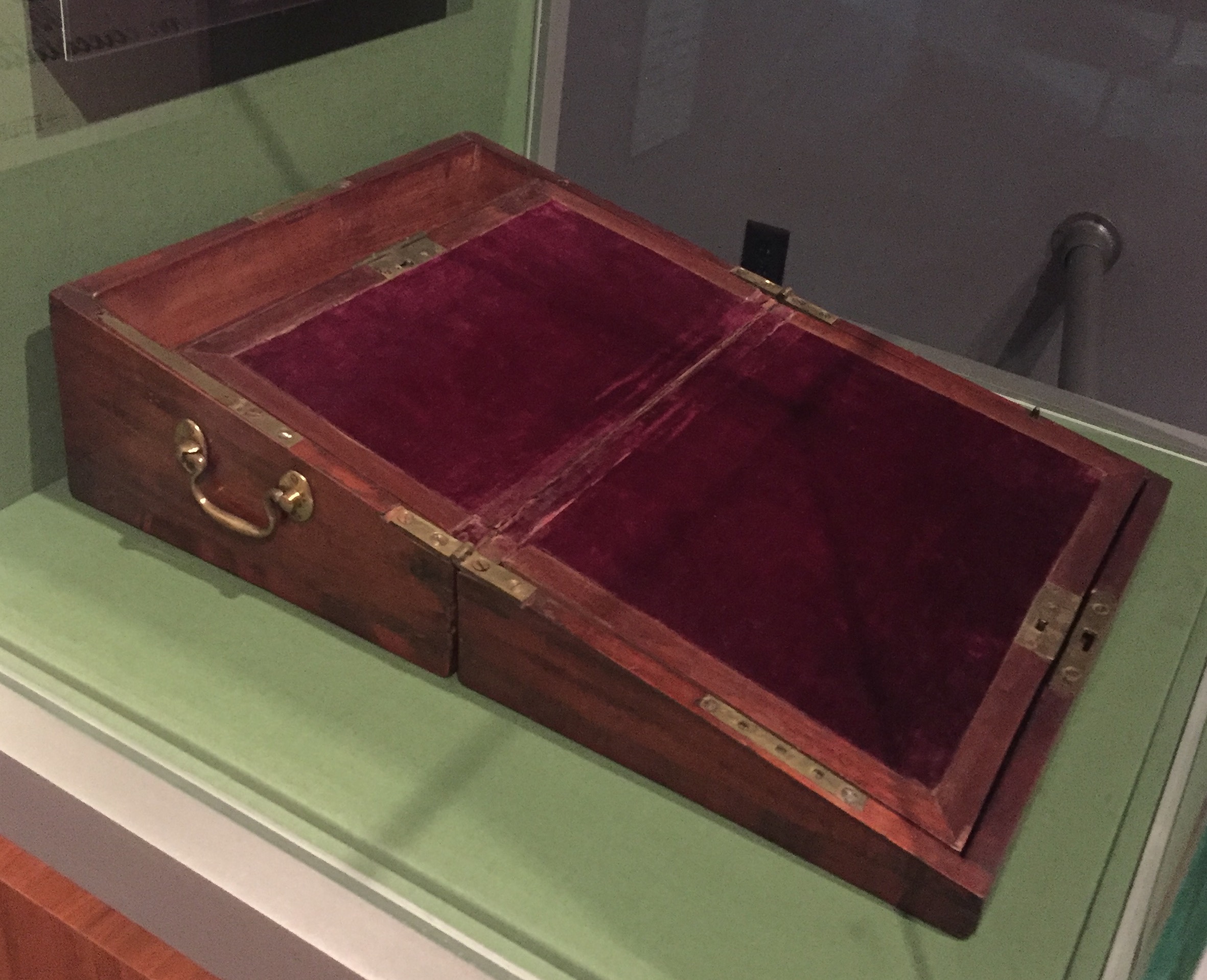Most 18thc gentlemen who traveled frequently owned a portable desk, and Alexander Hamilton was no exception. Basically a hinged wooden box, these desks were the predecessors of modern laptops, and considered as indispensable, too. Because most were custom-made, designs varied to taste, but all have a surface covered in soft cloth (which made a quill pen move more easily over the page) for writing, plus compartments for storing bottles of ink, pens, paper, and other supplies. The desks folded and latched shut into a self-contained unit for carrying.
This desk shown open belonged to Alexander Hamilton, and was probably used by him most of his adult life. It's not large; I'm guessing that, open as shown here, the writing surface is probably only about 18" x 24". It's currently on view at the American Revolution Museum at Yorktown, VA as part of their exhibition AfterWARd: The Revolutionary Veterans Who Built America, through November 27, 2017.
In the 1780s and after the war, Hamilton worked as a lawyer, frequently traveling by horseback and carriage for various cases around the state of New York. During this time, he also served as a representative to the New York State Legislature as well as the Continental Congress, and later as a delegate to the Constitutional Convention, which meant more traveling between his home in New York City, Albany, and, most often, Philadelphia - hundreds of miles on unpredictable roads, in winter and in summer and in good weather and bad.
Hamilton was a ferociously prolific writer, full of ideas, opinions, and arguments, and blessed with the gift for words to express them. In an era before phones, telegraph, and internet, being able to communicate through letters was vital. Wherever Hamilton left his offices at home or at work, this desk would have accompanied him.
Made of Spanish mahogany with brass hinges and fittings, the desk is battered and worn from use. Tradition says that this was the desk on which Hamilton wrote the fifty-one essays that became his share of "The Federalist Papers," and helped lead to the ratification of the Constitution. As monumental an accomplishment as this must have been, it must also not have been easy, even for him. Striving to remove himself from the distractions of New York City in 1787, Hamilton, his wife Eliza, and their young children traveled by packet up the Hudson River to Albany and The Pastures, the home of Eliza's family, the Schuylers. The length of the voyage was dependent on winds and currents, yet it must have given him uninterrupted days to think and write - something every writer needs and craves.
Still, spoiled as I am by modern technology, I marvel at the idea of writing this way: drawing each letter, each word, with a quill pen in one hand and an open bottle of ink in the other, on a desk like this one braced against your knees or a rickety ship-board bunk, and everything (including you) rocking and shifting as the packet tacked back and forth across the river....
Above: Portable desk owned by Alexander Hamilton, American or English, late 18thc. Collection of Department of Special Collections, Burke Library, Hamilton College. Photo ©2017 Susan Holloway Scott.
Read more about Eliza Schuyler and Alexander Hamilton in my historical novel, I, Eliza Hamilton. My latest historical novel, The Secret Wife of Aaron Burr, is now available everywhere. Order here.

